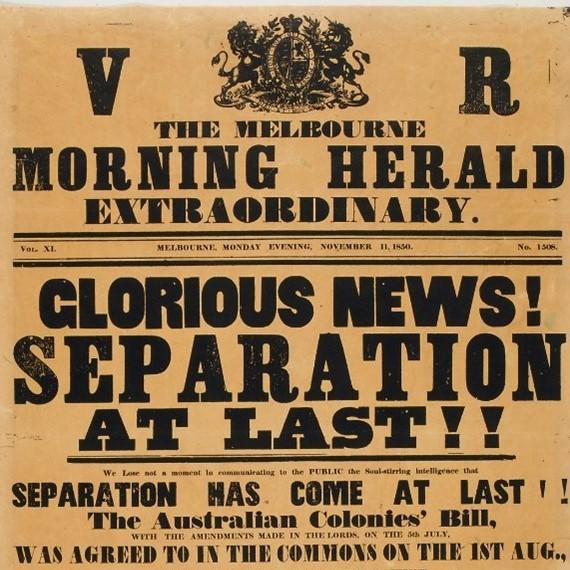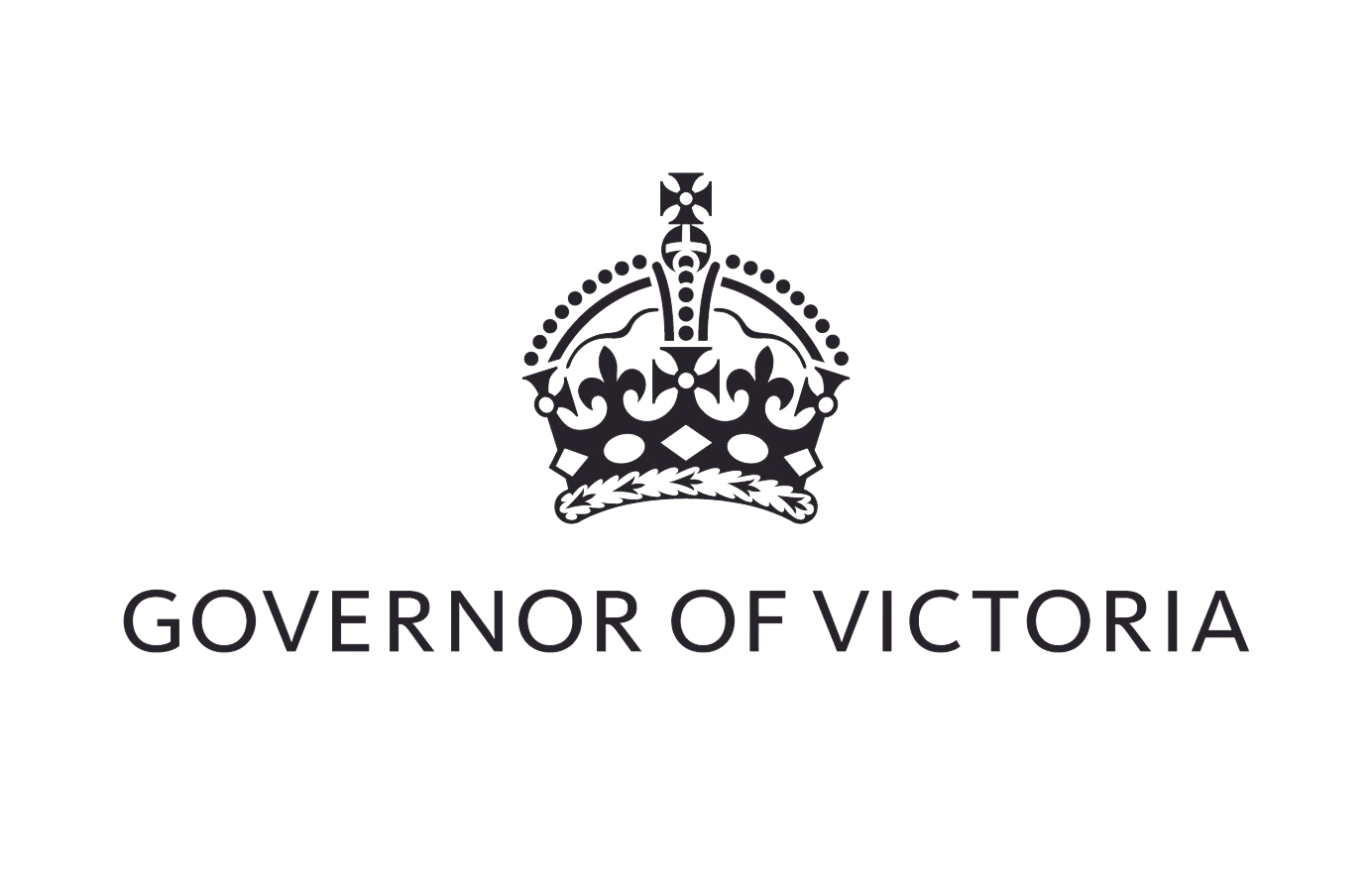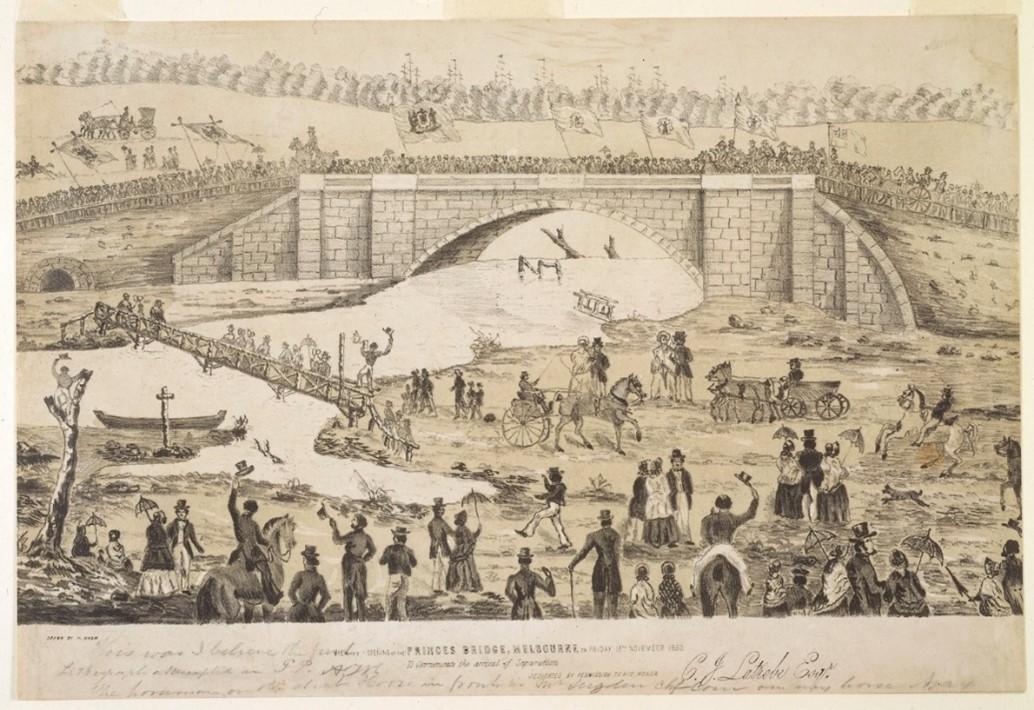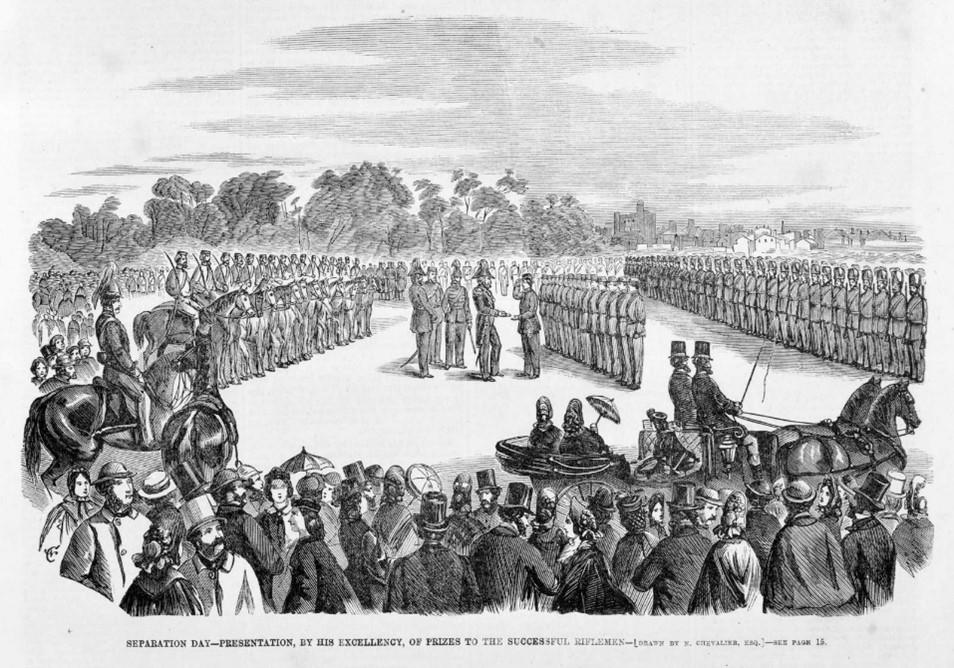
Learn about the separation of Victoria from New South Wales.
In November 1850, residents of the Port Phillip District received the news that Queen Victoria had assented to an Act to separate the District from New South Wales, to become the Colony of Victoria.
This separation was the result of a decade of advocacy and was greeted with days of jubilant celebrations across Melbourne.
Paving the way for the colony of Victoria to be formally established, the Act also enabled the appointment of Victoria’s first Lieutenant-Governor the following year.
Learn about the history of the separation movement and the reaction to the news.
A Case for Separation
A Separation Association was first formed in the Port Phillip District in 1840 to address perceived inequity in the allocation of public infrastructure funding to Sydney compared to the local area.
Participants in a Separation meeting made the decision to petition the British Government to grant a free representative government.
“…the only remedies for the grievance complained of consist in an entire separation of the province from the territory of New South Wales, and the grant of a free representative Government of its own.”
– Petition to the Imperial Parliament, published in the Port Phillip Gazette on 10 June 1840
Henry Gisborne, Commissioner of Crown Lands in the Port Phillip District, presented the petition to George Gipps, Governor of New South Wales, who did not act on this initial request.
The petition was eventually considered by the British House of Commons as part of reforms to the colonial Constitution in 1842, and the Port Phillip District was granted minority representation in the New South Wales Legislative Council.
It was not until 1849 that legislation proposed by Earl Grey, British Secretary of State for War and the Colonies, was introduced to the British Parliament to formally establish the colony of Victoria.
The Australian Constitutions Act received Royal Assent form Queen Victoria on 5 August 1850.
News of Separation Reaches Victoria
It took months for the news of the passing of the Act to reach the Port Phillip District.
On 11 November 1850, residents received the first word confirming the Separation, sparking celebrations across Melbourne.
The following morning saw the declaration of an immediate four-day public holiday, accompanied by a royal salute on Flagstaff Hill, and the release of balloons and fireworks.
On the night of 13 November, residents of Melbourne took part in an ‘Illumination Night’ with lanterns lit in houses throughout the city.
“The citizens began the illumination a little before eight o’clock, and by a short time afterwards the city became a blaze of lights.”
- The Argus, 19 November 1850
The final day of the public holiday period was marked with the much-anticipated official opening of the Princes Bridge over the Yarra River.
Superintendent Charles La Trobe also provided a speech to a gathering in the Botanic Gardens, under what became known as the ‘Separation Tree’.
Formal Separation
The Port Phillip District formally became the Colony of Victoria on 1 July 1851 after the New South Wales Parliament established the Victorian Legislative Council.
Charles La Trobe was subsequently appointed Lieutenant-Governor, with the official opening of the Victorian Legislative Council taking place in November – a year after news of Separation had reached Victoria.
The discovery of gold in Victoria that same year would spark the Gold Rush, bringing an era of unprecedented wealth along with huge population growth for the new colony.
“The past has been wonderful beyond all precedent, but the future is also beyond precedent promising. It is impossible, we believe, to estimate too highly the destinies of these gold colonies.”
- The Argus, 1 July 1857
In the years following, 1 July marked an important date for Victorians, with annual celebrations taking place to commemorate the anniversary of Separation.
The annual holiday on 1 July was eventually replaced after Federation in 1901.
Although it is no longer a public holiday, 1 July is still known as Victoria Day, commemorating the separation over 170 years ago.


